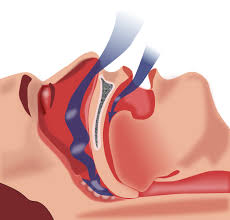- Home
- Editorial
- News
- Practice Guidelines
- Anesthesiology Guidelines
- Cancer Guidelines
- Cardiac Sciences Guidelines
- Critical Care Guidelines
- Dentistry Guidelines
- Dermatology Guidelines
- Diabetes and Endo Guidelines
- Diagnostics Guidelines
- ENT Guidelines
- Featured Practice Guidelines
- Gastroenterology Guidelines
- Geriatrics Guidelines
- Medicine Guidelines
- Nephrology Guidelines
- Neurosciences Guidelines
- Obs and Gynae Guidelines
- Ophthalmology Guidelines
- Orthopaedics Guidelines
- Paediatrics Guidelines
- Psychiatry Guidelines
- Pulmonology Guidelines
- Radiology Guidelines
- Surgery Guidelines
- Urology Guidelines
Amisulpride, an effective option for reducing post-operative nausea and vomiting

Postoperative nausea and vomiting PONV in the 24 hours after surgery may occur in 60 to 80 percent of patients with at least three of the recognized risk factors. They are more pronounced especially in females, having a prior history of PONV or motion sickness, nonsmokers and those expected to use opioids after surgery for pain.Unfortunately, there is no effective preventive treatment available for nausea and/or vomiting in the 24 hours after surgery. Dr.Peter Kranke professor of anesthesiology at the University of Würzburg in Germany conducted a study and have found an innovative use for a known drug amisulpride as it has been found to cause the significant reduction in the occurrence of PONV.According to researchers, it may be an effective treatment for preventing postoperative nausea and vomiting (PONV) when used intraoperatively in combination with a standard anti-nausea treatment, in the 24 hours after surgery in high-risk patients.The study published has been published in Anesthesiology.
"Tens of millions of Americans undergo surgery each year and many suffer from nausea and vomiting after their operation," said lead researcher Peter Kranke, M.D., professor of anesthesiology at the University of Würzburg in Germany. "Post-operative nausea and vomiting contribute to patient distress, can delay recovery after surgery and increases hospital costs. Patients with multiple risk factors for PONV require a multimodal approach for its prevention, including using a combination of anti-nausea drugs with different mechanisms of action, since it cannot be predicted which pathway(s) will be active in a patient."
Risk factors for PONV include being female, having a prior history of PONV or motion sickness, nonsmokers and those expected to use opioids after surgery for pain. Without effective preventive treatment, nausea and/or vomiting in the 24 hours after surgery may occur in 60 to 80 percent of patients with at least three of the recognized risk factors.
Currently, drugs from the serotonin 5-HT3 and corticosteroid classes are most commonly administered intraoperatively to prevent nausea and vomiting after surgery. However, "safe and effective anti-nausea drugs from other classes are needed to complement these," Dr. Kranke said.
Amisulpride works by blocking dopamine signaling in the body. Similar dopamine-blocking drugs were once previously used to prevent and control nausea and vomiting after surgery but are now avoided because irregular heart rhythms and drug-induced movement disorders occurred with their use. Amisulpride appears to be as effective as the previously used drugs in that class, but without the safety concerns, the authors note.
The study included 1,147 adult patients undergoing elective surgery under general anesthesia, who had three or four PONV risk factors. Patients were randomly assigned to receive either 5 milligrams of amisulpride intravenously or a placebo at the beginning of receiving general anesthesia, in addition to another anti-nausea drug.
Researchers found 58 percent of patients receiving amisulpride had a complete response -- defined as no vomiting or need for fast-acting medication to relieve vomiting -- in the 24 hours after surgery, compared with 47 percent of those receiving the placebo. Overall, vomiting (14 percent amisulpride vs. 20 percent placebo), any nausea (50 percent amisulpride vs. 58 percent placebo), significant nausea (37 percent amisulpride vs. 48 percent placebo), and those requiring fast-acting medication to relieve vomiting (41 percent amisulpride vs. 49 percent placebo) were significantly lower in the amisulpride group. Adverse events occurred no more frequently with amisulpride than with placebo.
The researchers concluded a low dose of intravenous amisulpride is safe and effective in preventing PONV when given in combination with an anti-nausea drug from another class to high-risk adult patients undergoing elective procedures. "This could enable improved control of PONV and allow for earlier mobilization and discharge of surgical patients," Dr. Kranke said.
Amisulpride is currently under review by the U.S. Food and Drug Administration. According to the authors, amisulpride has been used orally - in much larger doses than the intravenous dose used to prevent PONV in the current study - in European patients for 30 years to manage psychosis.
For more details click on the link: http://dx.doi.org/10.1097/ALN.0000000000002133

Disclaimer: This site is primarily intended for healthcare professionals. Any content/information on this website does not replace the advice of medical and/or health professionals and should not be construed as medical/diagnostic advice/endorsement or prescription. Use of this site is subject to our terms of use, privacy policy, advertisement policy. © 2020 Minerva Medical Treatment Pvt Ltd